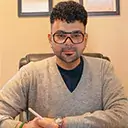Are you struggling with hair fall in the monsoon? You’re not alone. This season brings much-needed relief from the summer heat—but also triggers a surge in hair shedding for many. The increased humidity weakens roots, clogs scalp pores, and creates the perfect environment for fungal growth. It’s frustrating, especially when your hair feels limp, lifeless, and uncontrollably frizzy. But don’t worry—there’s a fix. In this blog, you’ll learn the science behind monsoon-related hair fall, what’s causing it, and dermatologist-recommended ways to regain control. Let’s stop seasonal shedding before it spirals into long-term damage.
1. Why Does Hair Fall Increase During the Monsoon?
Hair fall during monsoon season is a common seasonal concern for both men and women. The high humidity levels during the rainy season cause your scalp to sweat more, weakening the hair roots and increasing the chances of hair breakage. Moreover, exposure to dirty rainwater and pollution can add to the damage.
According to dermatologists, it’s normal to lose about 50–100 strands daily, but in monsoon, this number can double due to changes in moisture and scalp health.
2. The Science Behind Hair Fall in Monsoon Season
The scalp behaves differently in humid weather. Excess moisture from the air clogs pores and leads to seborrheic dermatitis (scalp inflammation) or fungal infections, which accelerate hair fall. The hair strands absorb moisture, swell, and become more brittle, making them prone to breakage when brushed or tied.
In addition, fungal overgrowth is more likely in warm, moist environments—leading to scalp conditions like dandruff, further weakening the follicles.
3. Top 5 Monsoon Hair Problems You Shouldn’t Ignore
- Excessive Hair Shedding
- Itchy or Flaky Scalp
- Frizzy and Unmanageable Hair
- Foul Odor from Scalp
- Oily Roots with Dry Ends
These signs are your scalp’s way of saying it’s under stress. Ignoring them can lead to long-term hair thinning or even traction alopecia if aggressive hairstyles are involved.
4. Is Monsoon Humidity Weakening Your Hair Roots?
Yes—humidity plays a direct role in root weakening. Moisture softens the scalp and opens the pores, weakening your hair’s hold at the roots. When combined with a buildup of sweat, oil, and pollutants, this can leave your hair follicles exposed and more prone to damage.
A weakened root system results in not just shedding but also slower regrowth cycles, meaning your hair looks thinner over time.
5. Fungal Scalp Infections in Rainy Season
One of the most overlooked causes of hair fall during monsoon is fungal scalp infections. Due to wet hair remaining tied up, poor scalp ventilation, or sharing combs/towels, fungi like Malassezia thrive—leading to dandruff, itchiness, and follicular inflammation.
If your scalp feels sticky, smells unusual, or flakes excessively, it’s time to switch to an antifungal shampoo or seek help from a dermatologist.
6. How to Identify Abnormal Hair Fall in Monsoon
While some shedding is seasonal, excessive hair loss beyond 2–3 weeks may be abnormal. Look out for:
- Wider partings
- Visible scalp patches
- Clumps of hair on the pillow or shower drain
- Delayed hair regrowth
If these symptoms persist, it’s best to consult a trichologist or dermatologist to rule out underlying issues like telogen effluvium, nutritional deficiencies, or hormonal imbalances.
7. Dermatologist-Approved Tips to Control Hair Fall in Monsoon
- Cleanse your hair 2 to 3 times a week using a gentle, sulfate-free shampoo to eliminate buildup.
- Use an antifungal shampoo once a week if you’re prone to dandruff.
- Avoid hot showers, as they open scalp pores and weaken follicles.
- Don’t tie wet hair—it can lead to breakage and fungal growth.
- Massage your scalp gently with lightweight oils like argan or jojoba.
- Avoid excessive brushing, heat styling, or chemical treatments during this time.
8. Best Hair Care Routine for Monsoon: Do’s and Don’ts
Do’s:
- Use a microfiber towel to gently dry hair.
- Apply a leave-in conditioner to combat frizz.
- Trim split ends regularly.
- Opt for loose hairstyles.
Don’ts:
- Don’t comb wet hair aggressively.
- Don’t use heavy oils or thick conditioners.
- Don’t experiment with hair color or bleach.
A consistent, monsoon-specific hair care routine makes a noticeable difference in reducing seasonal hair fall.
9. Monsoon Diet for Healthy Hair: What to Eat and Avoid
Your hair health is directly linked to your diet. Include foods rich in:
- Biotin (eggs, almonds)
- Iron (spinach, lentils)
- Zinc (pumpkin seeds, cashews)
- Vitamin C (oranges, guava)
Steer clear of oily, fried, and sugary foods, which can increase scalp oiliness and trigger inflammation. Drink plenty of water and consider a hair supplement only under medical advice.
10. When to See a Dermatologist for Severe Hair Fall in Monsoon
If your hair fall is persistent, patchy, or accompanied by scalp pain, it’s time to seek professional help. A dermatologist may recommend:
- Blood tests to check deficiencies
- Prescription treatments (e.g., minoxidil, topical steroids)
- Clinical procedures like PRP therapy or laser hair stimulation
Early intervention can prevent temporary monsoon hair fall from turning into permanent thinning.
Conclusion
Hair fall in monsoon can be alarming—but it’s also highly treatable with the right awareness, care, and consistency. Understanding the root causes and adjusting your hair care practices allows you to enjoy the season without stressing over your strands.








